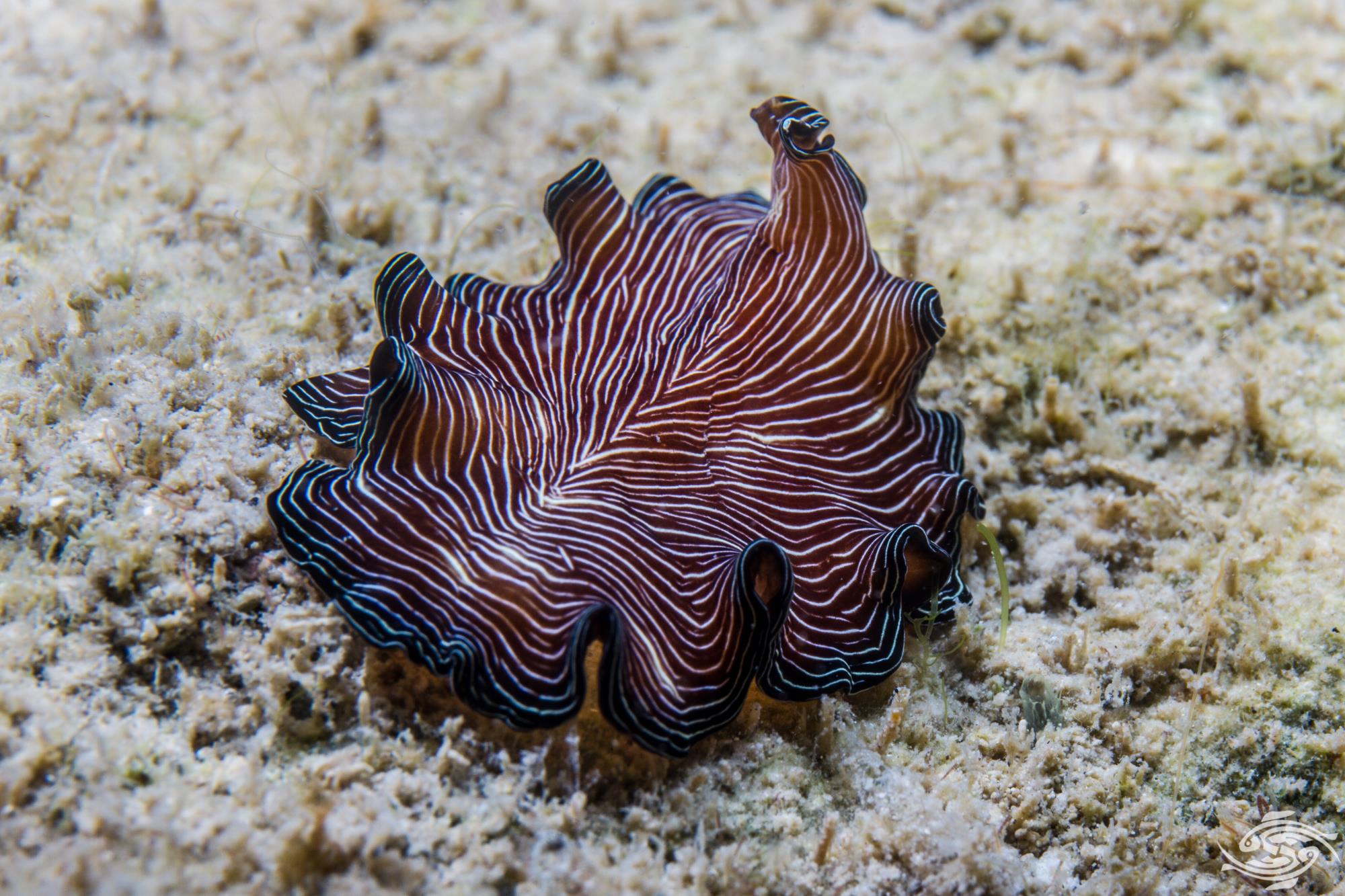The marine flatworm is one of nature’s most underrated marvels—a striking, free-living invertebrate that graces the ocean floor like a living ribbon. Though often mistaken for nudibranchs, these organisms belong to the phylum Platyhelminthes, a group of flat-bodied worms that includes both parasitic and non-parasitic species. Vibrantly colored and ecologically vital, marine flatworms are important predators and ecosystem indicators in tropical and subtropical marine habitats.
Unlike the notorious hammerhead flatworm or the invasive New Guinea flatworm found in gardens and forests, the marine flatworm is not a threat to terrestrial life. Instead, it serves as a natural regulator of invertebrate populations in coral reefs, tide pools, and even the deep sea. As more researchers turn their attention toward ocean health, the marine flatworm has emerged as both a biological curiosity and an environmental barometer.
A marine flatworm is a type of soft-bodied, free-living worm found exclusively in saltwater environments. Belonging to the order Polycladida, these creatures are noted for their flattened, ribbon-like bodies, which enable them to glide smoothly along the sea floor. The average flatworm ranges from 1 to 10 centimeters in length, although some species grow even larger. Their anatomy is relatively simple, yet surprisingly efficient, lacking a respiratory or circulatory system.
Marine flatworms use cilia on their undersides to move and a specialized pharynx to capture prey. Despite their lack of a centralized brain, their ganglia-based nervous system allows them to respond to light, touch, and other stimuli. Many species exhibit aposematic coloration, which warns potential predators of their toxicity. This defense mechanism, coupled with camouflage and mimicry, helps them survive in diverse marine environments.
One of the most captivating features of the marine flatworm is its vibrant, often psychedelic coloration. Their bodies shimmer in electric blues, radiant reds, golden yellows, and deep purples—an evolutionary adaptation that either acts as a deterrent to predators or allows them to mimic other, more dangerous sea creatures. This visual spectacle earns them nicknames like “butterflies of the sea.”
Internally, marine flatworms possess a branched gut and a single opening for both ingestion and excretion. They absorb oxygen directly through their skin due to their lack of lungs or gills. This simplicity extends to their reproductive system—many are hermaphrodites and capable of sexual and asexual reproduction. Some even participate in a bizarre behavior known as penis fencing, where two flatworms duel with their penises to decide who will inseminate the other.

Marine flatworms inhabit a wide range of oceanic environments. From shallow coral reefs in the Indo-Pacific to the rocky shores of the Atlantic, these creatures are remarkably adaptive. Their preference for warm, shallow waters doesn’t exclude them from being found in temperate zones or at surprising depths, thanks to their adaptability and mobility.
While marine flatworms live in the sea, their relatives, such as the hammerhead flatworm Texas populations and New Guinea flatworm Florida invasions, are making headlines as invasive land-based species. These terrestrial counterparts, though part of the broader flatworm family, differ significantly in both behavior and ecological role. Unlike flatworm parasites, marine flatworms are not reliant on hosts for survival and instead contribute positively to their ecosystems.
Marine flatworms are active predators, despite their slow and fluid movements. They primarily feed on small invertebrates like mollusks, crustaceans, and tunicates. Some species even hunt sessile animals such as sponges and corals. Their feeding technique involves everting a tubular pharynx to envelop and digest prey externally before pulling it into their bodies.
This feeding strategy allows the marine flatworm to consume organisms larger than their mouths would normally allow. Unlike flatworm parasites in humans, which rely on a host to complete their life cycle, marine flatworms are independent hunters. Their dietary habits help maintain balance in reef communities by keeping the population of smaller species in check, preventing overcrowding and degradation of the coral environment.
Reproduction in marine flatworms is one of the most fascinating aspects of their biology. As hermaphrodites, they carry both male and female reproductive organs, allowing for multiple reproductive strategies. During sexual reproduction, two flatworms may engage in penis fencing, using their bifurcated penises to try and inseminate the other while avoiding being inseminated themselves. The “winner” becomes the sperm donor, while the other carries and nurtures the eggs.
Many species can also reproduce asexually by fission, where the body splits, and each part regenerates into a complete individual. This process is shared with the planarian flatworm, often studied for its regenerative abilities in labs. The ability to regenerate makes flatworms particularly interesting to biologists and adds to their resilience in the wild.
Marine flatworms are critical players in the ocean’s complex food web. They serve as mid-level predators that control populations of smaller invertebrates while also providing food for larger organisms such as fish and crabs. In doing so, they help maintain biodiversity and balance within coral reef systems and other marine habitats.
Their sensitivity to pollution and habitat changes also makes them excellent bioindicators. A sudden drop or spike in marine flatworm populations can signal issues like water contamination or reef damage. As such, scientists are beginning to use these creatures to assess reef health, particularly in areas affected by climate change, overfishing, or coral bleaching.
It’s important to distinguish the marine flatworm from flatworm parasites that infect humans or animals. Parasites, such as flukes and tapeworms, rely on a host for survival and can cause significant health issues. The marine flatworm, by contrast, is a free-living organism that plays a beneficial role in its environment. It does not infect or harm humans.
Concerns often arise when flatworms are found in unexpected places, like flatworm in dog poop, which usually indicates a tapeworm or other parasite. However, finding a marine flatworm in such contexts would be highly unusual. When observing flatworms in terrestrial environments, it’s more likely to encounter invasive species such as the New Zealand flatworm or land-dwelling hammerhead flatworm.
The marine flatworm is a creature of contradiction—simple yet sophisticated, soft yet dangerous, fragile yet vital. Its colorful presence is not just a visual delight but a biological necessity in the marine world. From controlling prey populations to indicating environmental change, this vibrant invertebrate continues to intrigue scientists, divers, and nature enthusiasts alike.
By learning more about the marine flatworm and distinguishing it from its parasitic or invasive relatives, we can better appreciate the complexity of marine life. Conservation efforts and sustainable exploration are essential to ensure these magnificent sea dwellers continue to thrive in our oceans for generations to come.
What is a marine flatworm?
A marine flatworm is a free-living flatworm found in saltwater environments, known for its colorful body and ecological role as a mid-level predator.
Are marine flatworms harmful to humans?
No, marine flatworms are not parasitic and do not harm humans. However, they may produce toxins to deter predators.
What do marine flatworms eat?
They feed on small invertebrates like mollusks, tunicates, and crustaceans using a specialized pharynx.
How do marine flatworms reproduce?
They reproduce both sexually and asexually. Their sexual reproduction often includes a behavior known as penis fencing.
How are marine flatworms different from planarian flatworms?
While both are flatworms, planarians are typically freshwater species used in scientific research, whereas marine flatworms live in the ocean and play ecological roles in marine habitats.
Are marine flatworms found in aquariums?
Some species can be kept in marine aquariums but require specific care due to their delicate nature and sometimes toxic defenses.
You may also read: Types of Coral: The Ultimate Guide to Hard, Soft, and Reef-Building Corals

